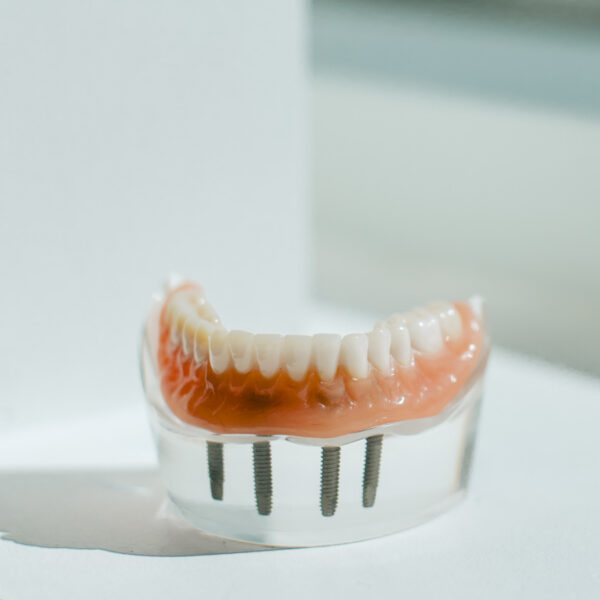Most of us are lucky enough to have a full set of strong, healthy teeth and we don’t think much about how amazing they are when eating a delicious meal or showing our happiest smile.
Unfortunately, not everyone experiences optimal oral health. Dental disease, trauma, or even developmental anomalies can result in the loss of multiple teeth in a row for some people. This can be particularly devastating to anyone on both a functional and aesthetic level. It has even been shown to affect long-term emotional and physical health, so being able to restore these missing teeth is extremely important.
For the dental team, replacing longer spans of missing teeth can be technically complicated. Typically a space is filled by attaching bridgework to adjacent healthy teeth when available or using removable appliances, such as partials or dentures. So what options do you have when conventional treatments aren’t available or if you are looking for the best, most stable option?
The implant-supported bridge is the superhero of dental replacements for missing multiple adjacent teeth. Utilizing dental implants as anchors, this type of bridge offers a fixed, stable, and durable solution for patients with multiple missing teeth or even total loss of teeth.


Here are some benefits of this dental option:
1. A Powerful Chew: Say goodbye to missing out on your favourite crunchy snacks. With this bridge, you can eat chips and nuts without worry.
2. A Natural Smile: Sharing your smile is even better when you have a bridge that looks and feels just like your natural teeth.
3. Durability and Strength: These implants are strong. They stick around for the long haul, so you can count on them to be there for you through thick and thin.
4. Jawbone Preservation: Dental implants help preserve facial contours and sharp jawlines. When you chew on dental implants, they stimulate the jawbone where your natural teeth used to be, which is so important for maintaining the volume of bone that would otherwise slowly disappear over time.
5. Confidence Boosting: Dental restorations can greatly impact the way we feel, inside and out.
If you’re considering this impactful treatment option, here are the following steps you can expect:
Treatment Planning. A comprehensive examination is done by a dentist to assess dental health and determine if you are a suitable candidate for dental implants. Once approved, a treatment plan is formulated. This plan includes the number of implants needed, the positioning of the implants, and the design of the bridge.
Implant Placement. The dental implants, typically titanium posts, are then placed and begin to integrate with the jawbone through a process called osseointegration. You can expect a longer healing time for optimal comfort.
Abutment Placement. Once the implants have fully integrated, abutments are attached to the implants. Abutments are the connectors that will secure the bridge to the implants.
Bridge Fabrication. Digital impressions of the surrounding teeth and implant abutments are taken to create a custom-made dental bridge that will be attached to the abutments. The bridge is designed to match the shape, size, and color of the natural teeth for a seamless appearance.
Bridge Attachment. The final step involves attaching the bridge to the abutments. The bridge is securely fixed in place, providing a stable and functional replacement for the missing teeth.
Implant-supported bridges are simply an incredible way of restoring you back to what nature ideally wants you to have—a full complement of healthy, functioning teeth.



